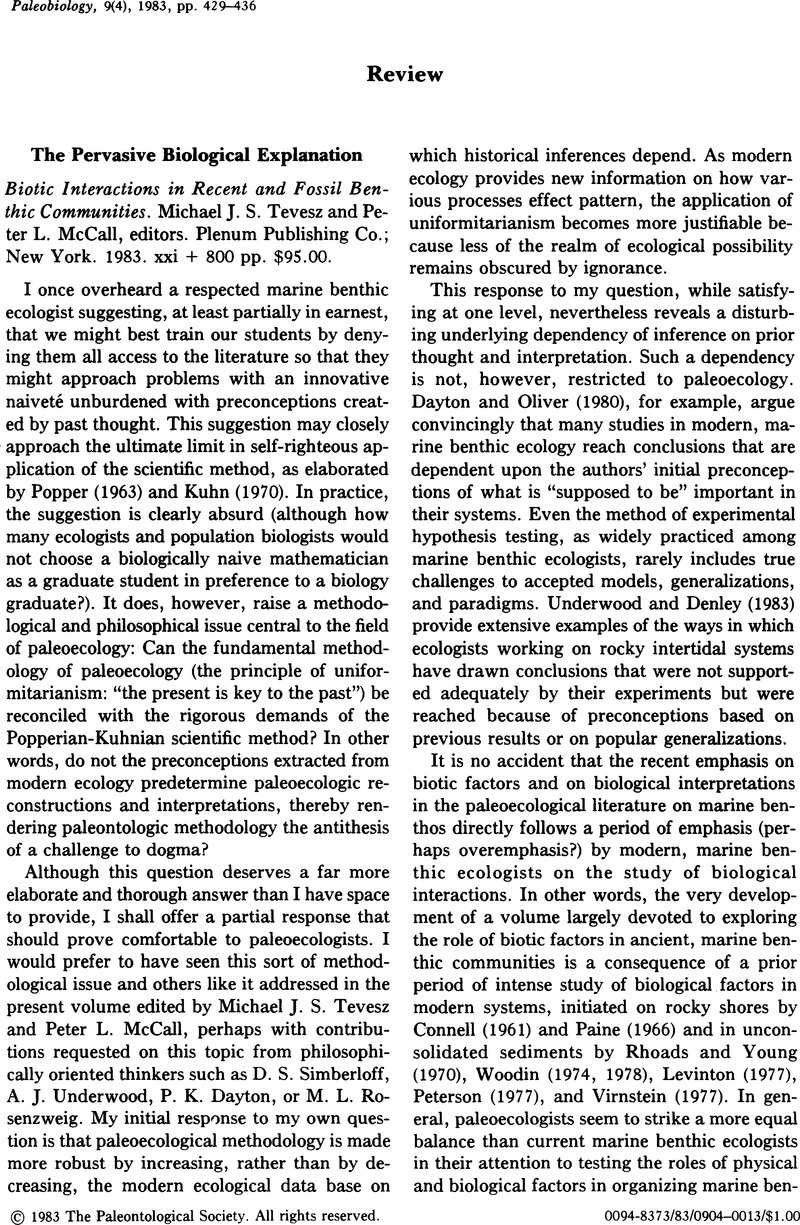Crossref Citations
This article has been cited by the following publications. This list is generated based on data provided by Crossref.
Kitchell, Jennifer A.
1985.
Evolutionary paleoecology: recent contributions to evolutionary theory.
Paleobiology,
Vol. 11,
Issue. 1,
p.
91.
Jackson, Jeremy B. C.
1988.
Does ecology matter? - Evolution and Escalation: an ecological history of life. Geerat J. Vermeij Princeton University Press; Princeton, New Jersey. 1987. xv + 527 pp. $47.50..
Paleobiology,
Vol. 14,
Issue. 3,
p.
307.
O'Brien, Michael J.
Lyman, R. Lee
and
Leonard, Robert D.
1998.
Basic Incompatibilities between Evolutionary and Behavioral Archaeology.
American Antiquity,
Vol. 63,
Issue. 3,
p.
485.



